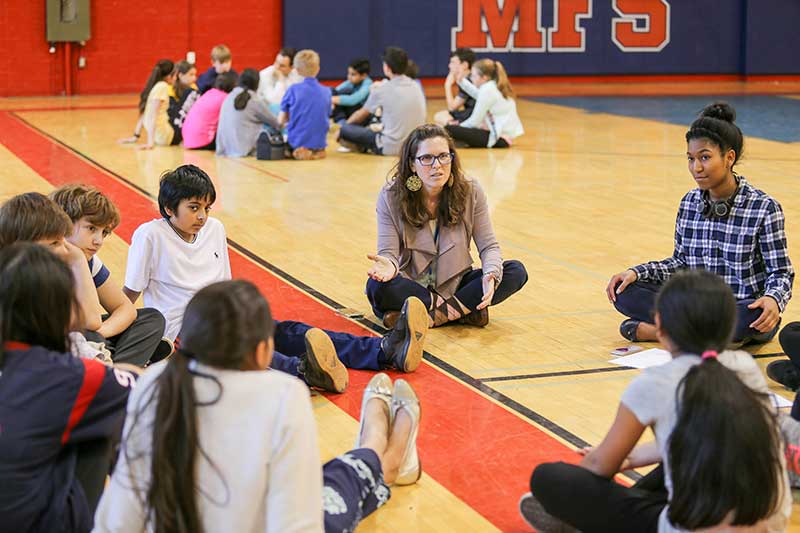From the desk of Middle School Director Kimberly Clarkson
Sense of community is often viewed as an intangible; something difficult to measure but that you can sense when you encounter a group with this strength at its core. At Moorestown Friends Middle School we work hard to create an environment where students feel safe, welcome, and accepted for who they are. Developing a strong sense of community within a school takes time, effort, and intentionality, particularly in middle school. At a time in their lives when they are seeking independence from adults and pushing boundaries, middle school students thrive when they are able to be a part of such a community of their peers.
In this four-part series, we will outline four key elements to building community:
- Start early in the year
- Make the time for experiences that build connections
- Create close circles of peer support as well as broader community connections
- Provide opportunities for leadership and mentorship that students can look forward to as a culmination of their middle school experience
Circle Up and Branch Out
Within any community it is vital to have a solid core support system, as well as a diverse network of broader community connections. Our expanded advisory program, implemented in the 2016-2017 school year, allows students to experience a small group of peers with whom they share and grow over the course of each year. Under the guidance of their faculty advisor, our grade level advisory groups, which average 12 students, explore topics of identity, academic growth, moral and ethical dilemmas, and support each other through personal challenges. This provides a home base for each student; a place where an adult and a small group of peers work together to build a tight-knit support system. Expanding beyond the daily connections made in the classroom or advisory is critical to feeling seen and welcomed throughout the community. In the Middle School at Moorestown Friends School each year we have eighth grade students lead a mixed-grade assembly. Groups are created by combining advisories at all four grade levels, fifth through eighth, and then each group develops a skit or performance focused on Quakerism as a core element of our school community. This experience, preparing over four or five meetings for an assembly in late-September, allows students to get to know individuals in different grades and work together towards a common goal. These mixed grade groups are sustained over the course of the year for a variety of community meetings and activities. Building community at a small-group level, as well as making connections throughout the Moorestown Friends Middle School, allows our students to feel seen by their peers as they navigate their complex daily lives as adolescents.
While it often may seem like vibrant communities build themselves, in reality little is left to chance when it comes to creating a well-functioning, tight-knit community. Many view the middle school years as tumultuous. I prefer to think of them as a beautifully dynamic time of rapid change and development, during which students are primed to take on additional responsibility, learn and refine new skills, and support and grow with their peers. While building community in a middle school takes focused time and ongoing effort, the work we have done in our Moorestown Friends School Middle School already pays off in students and families who are more invested in and connected to each other.
Middle School Director Kimberly Clarkson is a seasoned educator with a broad range of experiences in independent schools. Prior to joining Moorestown Friends in 2015, Kimberly served at Sidwell Friends in Washington D.C., teaching social studies, math, and Spanish and acting as the Sixth Grade Coordinator and Middle School Diversity Coordinator. She earned a reputation for integrating service learning and innovative pedagogy into the classroom and was named a 2014-15 National Association of Independent Schools Teacher of the Future. Kimberly also taught Spanish and pre-algebra at Turning Point School in Culver City, CA and was a Spanish and Italian teacher at The Newport School in Kensington, MD. She holds a B.A. in psychology from Scripps College and an M.A. in secondary education from Loyola Marymount University.

